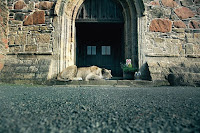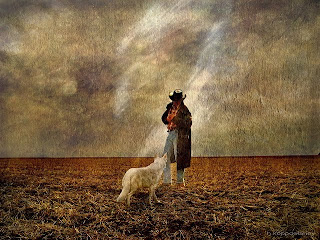George Logan, born Bellshill, Lanarkshire, has been a photographer for 20 years. He is famous for his distinct style, which is often described as having an otherworldly quality. He studied at Blackpool College of Photography before moving to London, where he is now based. George has worked extensively in the commercial world, for agencies including M&C Saatchi, BMB, BBDO, Ogilvy, TBWA and VCCP, on campaigns for brands including O2, Corona, Qantas, AT&T, Nokia and Ribena. Awards include the IPA/Lucie Awards Advertising Photographer of the Year in 2008 and Gold at the Association of Photographers Awards.

Using the spectacular photography of George Logan and the skills of Steve Hawthorne and Katy Hopkins at advertising company WCRS Limited, these images of wild animals placed within an urban setting aim to provide a shocking reminder that wildlife is losing its habitat at an alarming rate. All services involved in this campaign, including advertising space and printing, have been kindly donated and together we are working to raise awareness of the issue and the work which Born Free is doing to “keep wildlife in the wild” – without strong, well-connected areas of habitat, this will be impossible.
When animal species lose their natural homes, they are forced to eke out their lives in smaller and smaller, fragmented habitats. This puts increasing pressure on the natural resources, such as food and water, that they need for their survival. In addition, decreasing availability of natural habitats mean that animals and humans often come into conflict, which can result in damage to crops, predation on livestock, persecution, injury and death.

“Most people know that deforestation and the loss of natural habitats is a problem. They know that many animals are displaced an killed by this process. That doesn’t mean, however, that they do anything about it. This is partly because people feel they’ve heard it all before and partly because the problem seems so far away. So, in order to address this, we wanted to create a campaign that highlighted the problem in a way that was both surprising and that made the problem feel relevant to people in Britain. That’s where the idea of homeless animals came from. By destroying the areas in which animals would naturally live, we are essentially making them homeless. And homelessness is something that everyone in Britain understands and can relate to. By putting animals in settings where we would normally expect to see homeless humans we are getting across the problems that these animals face in an unexpected, relevant and hopefully engaging way.”
"It has to be heartfelt or it feels like going through the motion trying to produce things other people might like. The projects I've shot that have meant something to me have always led to commissions. Shooting gorillas in Africa was something I'd wanted to do for a very long time." - George Logan
--------------------------------------------------------------------------------------
‘Translocation’ by multi-award winning photographer George Logan is a collection of fantastical photographs. With warmth and humour these translocated images bring together Scotland’s dramatic landscapes with the beauty of Africa’s wild animals.

Logan traveled extensively throughout Africa to capture the wild animals in their natural habitats, visiting Botswana, Namibia, Tanzania, Kenya and South Africa. The landscape shots are largely taken in Scotland and the wild coastlines of Cornwall. Logan then mixes animal and landscape images that feel like plausible combinations, resulting in a surprising set of photographs.
Filled with high-colour photographs of animals better suited to the Serengeti than Slough, Logan’s award-winning images feature lions on church door steps and warthogs down village lanes. Despite a somewhat unnerving closeness to reality, the photographs are in fact composite shots featuring images snapped in both Blighty and some of Africa’s most dramatic landscapes.
“As a child I’d tell tales to classmates and claim I had been raised on an African farm surrounded by exotic wildlife. It had me wondering how these creatures would appear in the rural Scottish landscapes I was familiar with. This project allowed me to indulge these fantasies.” - George Logan
Born Free founder and actress, Virginia McKenna OBE, who has written the foreword said, “There are many wonderful wildlife photographers, but George’s images are amongst the most intriguing, thought-provoking and original.”
What drew me into this work was the unique combination of animals and rural/suburban landscapes. The combination of the two is unexpected and yet realistic. The nature of animals trying to take back the land they once roamed freely. All of these images cause the viewer to think about animals and the restrictions we have placed on them. The Scottish landscapes with African animals are sticking and the new environments are puzzling at first glance.
George LoganTanslocation
 Exotic : of foreign origin or character; not native; introduced from abroad, but not fully naturalized or acclimatized
Exotic : of foreign origin or character; not native; introduced from abroad, but not fully naturalized or acclimatized
























